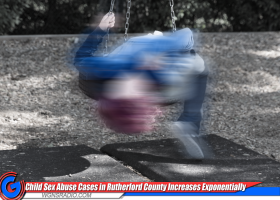Did you remember to turn your clock BACK 1-hour? We are again on regular time (Central Standard Time), as of 2:00AM Sunday, November 1, 2015.
In addition to remembering to set your clock BACK an hour, it's also a good time to a new battery in your smoke alarm. Make this a habit and you will be much safer.
When did the practice of changing time begin?
Many are surprised to learn that Daylight Savings Time has been with us for almost 100-years!
It began as an effort to reduce the cost of generating electricity by extending the daylight hours, and having people sleep an hour more during the dark hours. Germany and Austria tried it on April 30, 2016, however the time switch back then was at 11:00PM.
It was like a "better mousetrap", everyone jumped on board. Within 3-weeks, May 21, 1916, Belgium, Denmark, France, Italy, Luxembourg, Netherlands, Norway, Portugal, Sweden, Turkey, and Tasmania. Nova Scotia and Manitoba adopted it as well. The next year, Australia and Newfoundland began saving daylight.
Daylight Savings Time was not formally adopted in the United States until 1918 when congress created 'An Act to preserve daylight and provide standard time for the United States'. However, after World War I ended, the law was so unpopular here that a large group of citizen moved to kill the legislation in 1919. At that time, President Woodrow Wilson signed an override, allowing states the option of continuing to use Daylight Savings Time. It continues in continued in a few states, such as Massachusetts and Rhode Island, and in some cities, such as New York, Philadelphia, and Chicago.
During World War II, President Franklin Roosevelt instituted year-round Daylight Saving Time, called "War Time," from February 9, 1942 to September 30, 1945.
From 1945 to 1966, there was no federal law regarding Daylight Saving Time, so states and localities were free to choose whether or not to observe Daylight Saving Time and could choose when it began and ended. This understandably caused confusion, especially for the broadcasting industry, as well as for railways, airlines, and bus companies. Because of the different local customs and laws, radio and TV stations and the transportation companies had to publish new schedules every time a state or town began or ended Daylight Saving Time.
On January 4, 1974, President Nixon signed into law the Emergency Daylight Saving Time Energy Conservation Act of 1973. Then, beginning on January 6, 1974, implementing the Daylight Saving Time Energy Act, clocks were set ahead. On October 5, 1974, Congress amended the Act, and Standard Time returned on October 27, 1974. Daylight Saving Time resumed on February 23, 1975 and ended on October 26, 1975.
Inconsistent use in the U.S.
In the early 1960s, observance of Daylight Saving Time was quite inconsistent, with a hodgepodge of time observances, and no agreement about when to change clocks. The Interstate Commerce Commission, the nation's timekeeper, was immobilized, and the matter remained deadlocked. Many business interests were supportive of standardization, although it became a bitter fight between the indoor and outdoor theater industries. The farmers, however, were opposed to such uniformity. State and local governments were a mixed bag, depending on local conditions.
Efforts at standardization were encouraged by a transportation industry organization, the Committee for Time Uniformity. They surveyed the entire nation, through questioning telephone operators as to local time observances, and found the situation was quite confusing. Next, the Committee's goal was a strong supportive story on the front page of the New York Times. Having rallied the general public's support, the Time Uniformity Committee's goal was accomplished, but only after discovering and disclosing that on the 35-mile stretch of highway (Route 2) between Moundsville, W.V., and Steubenville, Ohio, every bus driver and his passengers had to endure seven time changes!
The Uniform Time Act
By 1966, some 100 million Americans were observing Daylight Saving Time based on their local laws and customs. Congress decided to step in and end the confusion, and to establish one pattern across the country. The Uniform Time Act of 1966 (15 U.S. Code Section 260a) [see law], signed into Public Law 89-387 on April 12, 1966, by President Lyndon Johnson, created Daylight Saving Time to begin on the last Sunday of April and to end on the last Sunday of October. Any State that wanted to be exempt from Daylight Saving Time could do so by passing a state law.
The Uniform Time Act of 1966 established a system of uniform (within each time zone) Daylight Saving Time throughout the U.S. and its possessions, exempting only those states in which the legislatures voted to keep the entire state on standard time.
In 1972, Congress revised the law to provide that, if a state was in two or more time zones, the state could exempt the part of the state that was in one time zone while providing that the part of the state in a different time zone would observe Daylight Saving Time. The Federal law was amended in 1986 to begin Daylight Saving Time on the first Sunday in April.
Under legislation enacted in 1986, Daylight Saving Time in the U.S. began at 2:00 a.m. on the first Sunday of April and ended at 2:00 a.m. on the last Sunday of October.
The Energy Policy Act of 2005 extended Daylight Saving Time in the U.S. beginning in 2007, though Congress retained the right to revert to the 1986 law should the change prove unpopular or if energy savings are not significant. Going from 2007 forward, Daylight Saving Time in the U.S.
- begins at 2:00 a.m. on the second Sunday of March and
- ends at 2:00 a.m. on the first Sunday of November
In most of the countries of Western Europe, including the countries that are members of the EU, Daylight Saving Time:
- begins at 1:00 a.m. GMT on the last Sunday of March and
- ends at 1:00 a.m. GMT on the last Sunday of October
Now after all of that, did you remember to set your clock BACK 1-hour? If not, make the change now so that you'll be on the same time as your neighbors!












